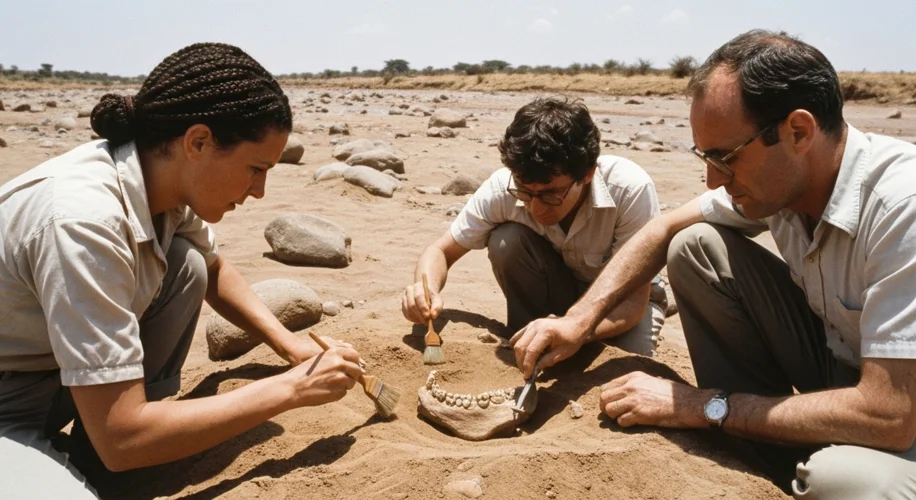The dusty plains of Ethiopia, a land steeped in the ancient echoes of humanity’s dawn, have once again whispered secrets from our distant past. Imagine standing on this very ground, not thousands, but millions of years ago, a time when the landscape teemed with life, and the very first stirrings of what it means to be human were taking shape. It is here, in the Ledi-Geraru region, that a remarkable tapestry of our earliest ancestors has been meticulously pieced together, offering a profound glimpse into the crucible of human evolution.
For decades, paleoanthropologists have been drawn to Ethiopia, a veritable treasure trove of hominin fossils. Think of the iconic “Lucy,” Australopithecus afarensis, discovered in the nearby Awash Valley, a fossil that revolutionized our understanding of bipedalism. But the story, as it always does, continues to unfold. The discoveries at Ledi-Geraru are not just adding new chapters; they are rewriting entire volumes, pushing back the timeline and revealing a more complex picture of our lineage.
At the heart of these revelations are fossils that speak of not one, but two crucial groups of early human relatives: Australopithecus and early Homo. The unearthed remains, dating back an astonishing 2.8 to 2.5 million years ago, represent some of the oldest evidence of the Homo genus found anywhere on Earth. This places these early members of our own biological family squarely in a period of immense environmental and climatic flux, a time when the African continent was undergoing dramatic transformations.
Among the most significant finds is a partial jawbone, known as LD 350-1. This remarkable specimen, attributed to the Homo genus, exhibits a mosaic of primitive and derived features. Its smaller, more human-like teeth and a more rounded dental arcade set it apart from its Australopithecus predecessors. Yet, it retains some robusticity that hints at its ancient origins. This jawbone acts as a crucial bridge, a physical testament to the evolutionary transition from the more ape-like australopithecines to the earliest members of our own genus.
But the story doesn’t end with Homo. Ledi-Geraru has also yielded significant Australopithecus fossils from the same time period. This coexistence is vital. It suggests that our ancestors were not alone; they shared their world with other hominin species, creating a dynamic and competitive evolutionary landscape. What were their interactions like? Did they compete for resources? Did they influence each other’s evolutionary paths? These questions now have a tangible, physical basis for exploration.

The significance of these discoveries cannot be overstated. They push the known origins of the Homo genus further back in time, suggesting that the evolutionary split between the Australopithecus lineage and the Homo lineage occurred even earlier than previously thought. This has profound implications for understanding the very earliest stages of human evolution, the period when crucial adaptations, such as tool use and increased brain size, began to emerge.
The environmental context of Ledi-Geraru during this period is also critical. The fossils are found in sedimentary layers that tell a story of a changing landscape, from more wooded environments to increasingly open grasslands. This environmental pressure likely acted as a powerful selective force, favoring individuals with traits that allowed them to exploit new ecological niches. The emergence of the Homo genus, with its potentially greater adaptability and perhaps nascent tool-making abilities, may have been a direct response to these challenging conditions.
These findings paint a picture of a complex, branching evolutionary tree, rather than a simple, linear progression. They underscore that evolution is a messy, dynamic process, with multiple species existing simultaneously, vying for survival. The Homo genus did not simply appear out of nowhere; it emerged from a rich and diverse australopithecine world.
The work at Ledi-Geraru continues, and with every new fossil unearthed, our understanding of who we are and where we come from deepens. These ancient bones, weathered by millions of years, are not just remnants of the past; they are the very foundation of our present, offering an unparalleled window into the astonishing journey that led to us. They remind us that the story of human evolution is a grand, ongoing narrative, still being written in the sands of time, in places like the heart of Ethiopia.

